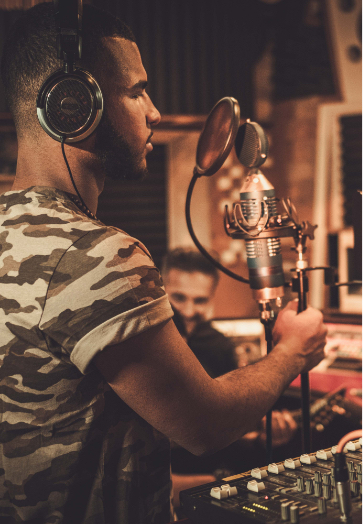You risk losing time, money, and the trust of your learners if you hire the wrong digital learning designer. It’s not an exaggeration to say that this choice could make or break your educational initiatives.
With more businesses moving to online platforms for training and development, the demand for quality online courses has skyrocketed. That means the person you hire needs to be not just good, but exceptional.
You’re ready to dive into the world of online education, and you’re eager to deliver something extraordinary. But remember, you’re not just choosing an individual; you’re selecting a partner to help you craft memorable and impactful online experiences for your learners. This is the person who will influence not only the quality of your content but also how effectively that content resonates and engages your audience.
In this guide, we’re offering you a roadmap. A guide to navigating the ins and outs of this critical decision.
We’ll arm you with 13 crucial tips that will empower you to sift through the noise and hone in on the best candidate for your unique needs. Are you ready? Let’s get started.
1. Know Your Needs
Before you even think about reaching out to potential eLearning designers, it’s crucial to understand what you’re looking for.
What is the core subject matter of your online classes? Who are your target learners? How extensive will your online courses be? Will you need quizzes, interactive modules, or any other specialized features?
Having a clear idea of what you need will not only help you articulate your project’s scope but also enable you to weed out candidates who aren’t a good fit right from the start. Think of it as drawing a map for the journey ahead.
2. Check Their Track Record
A shiny portfolio is one thing, but what really counts is a proven track record. Just as you wouldn’t hire a builder who has never laid a brick, you shouldn’t hire a digital learning provider without a history of successful projects. Check for tangible evidence of their experience, such as:
- Completed courses
- Testimonials
- Case studies that show measurable success
It’s not just about whether they can do the job; it’s about how well they’ve done similar jobs in the past. That’s your best predictor for future success.
3. Get Referrals
Word-of-mouth remains one of the most reliable ways to find quality service providers. If a colleague or friend has recently launched successful online courses, ask for their recommendations on instructional designers.
A positive referral not only offers social proof but also saves you the time and effort of scouring the market. You’ll start your search already having a name that comes with a stamp of approval. It’s like getting a head start in a race, positioning you closer to the finish line right from the get-go.
4. Ask for a Sample
Imagine getting a free trial before making a big purchase; that’s what a sample course from a professional e-learning designer offers you. Requesting a sample is more than reasonable (it’s a smart way to assess compatibility).
Most reputable designers have a portfolio that includes templates or even small modules they can tailor to give you a taste of their work. This allows you to gauge their style, understand their capabilities, and envision what they can bring to your project. It’s like test-driving a car before you buy it; you’ll know pretty quickly whether it’s a good fit.
5. Test Technical Skills
Navigating the digital landscape is not just about good design; it’s also about technical acumen. Your chosen digital learning provider should be well-versed in the technologies and platforms that will host your courses.
Ask them about their proficiency in coding languages, experience with Learning Management Systems (LMS), or other tech tools you plan to use.
The last thing you want is a designer who’s a wizard at creating content but a novice at implementing it on the platform you use. Like a carpenter with a full toolbox, they should have all the necessary skills to build your project from the ground up.
6. Evaluate Creativity
Designing a class isn’t as simple as creating a slideshow; it requires a creative approach to keep your learners engaged. During the interview process, ask for examples of how the instructional designer has made courses both informative and captivating.
Do they use storytelling, gamification, or interactive elements? A designer’s creativity can be the secret sauce that turns a mundane remote course into a memorable learning experience. It’s like adding spices to a dish; without it, even the most nutritious meal can seem bland.
7. Time Management Skills
Time waits for no one, and certainly not for projects that drag on indefinitely. Ask your potential designer how they handle deadlines and what steps they take to ensure a project stays on track. Whether it’s setting milestones or conducting regular check-ins, their approach to time management should align with your project’s needs.
A designer who can’t manage time efficiently can turn what should be a sprint into a never-ending marathon. Make sure they have the discipline to cross the finish line on time, every time.
8. Discuss the Budget Early On
While quality should be your top priority, budget constraints are a reality for most projects. Be upfront about your budget limitations early in the discussion to ensure there are no surprises later on.
A clear dialogue about finances will help you and your designer align expectations and deliverables. Finding a provider who offers high-quality e-learning services within your budget is like finding a quality meal at an affordable price. So make sure to have the “money talk” sooner rather than later.
9. Set Clear Objectives
If you don’t know where you’re going, you’re likely to end up somewhere you didn’t intend to be. Setting clear objectives for your online courses gives you a roadmap to success.
Are you looking to increase learner engagement, provide certification, or perhaps improve performance metrics? Whatever it is, make it clear from the outset and ensure your designer is on the same page.
Having clear goals is like having a recipe when cooking. You know what ingredients you need and the steps to follow to get the desired result.
10. Insist on Responsiveness
In a world where we’re all connected digitally, responsiveness is non-negotiable. Whether it’s emails, texts, or calls, the designer you choose should get back to you promptly.
If you’re facing communication delays during the hiring process, it’s a red flag for what’s to come. Imagine trying to assemble a puzzle with missing pieces; that’s what a project is like without smooth communication. Ensure that your designer can fill in all the communication gaps.
11. Gauge Their Passion
Enthusiasm isn’t just a nice-to-have; it’s a must-have. A passionate digital learning designer will go the extra mile to make sure your courses shine. During the interview, look for signs of genuine interest in your project and the broader field of digital learning.
Passionate workers are like a charged battery; they infuse energy into everything they do. If the designer’s eyes light up when discussing ideas and strategies, you’re probably onto a winner.
A passionate designer doesn’t just clock in and clock out; they bring fresh ideas, innovative solutions, and a sense of purpose to your project. They’re emotionally invested in the success of your learners, making your mission their own.
12. Look for Cultural Fit
Beyond skills and experience, the designer you choose should mesh well with your company’s culture. A poor cultural fit can introduce friction into the project, hampering its success.
During your conversations, gauge their understanding of your business ethos, workflow, and team dynamics. Finding a designer who fits your culture is like finding a missing puzzle piece; it completes the picture and enhances the overall output.
Keep in mind that you and your designer will be communicating frequently. If your designer understands and fits into your company culture, those interactions will be more harmonious, leading to a smoother, more effective process and a better end product.
13. Assess the Long-Term
While you may be hiring for a specific project, consider the long-term potential of your partnership. Does this designer have the range and skills to adapt to your evolving needs? Do they offer services that you might require in the future?
Long-term thinking helps you choose a designer who won’t just be a flash in the pan but a lasting contributor to your success. It’s like planting a tree rather than picking a flower; you’re investing in future growth.
Finding the Right Digital Learning Designer
Hiring a digital learning designer is more than just ticking off boxes; it’s about establishing a valuable partnership. By taking these tips into account, you’ll be well on your way to making a choice you won’t regret.
And speaking of making choices, at Octivo Digital, we provide professional learning solutions that stand out from the crowd and help amplify your business through the power of knowledge and know-how.
Consult with our experts today to amplify your enterprise to new levels. You’ll know very soon that you made the right choice!









